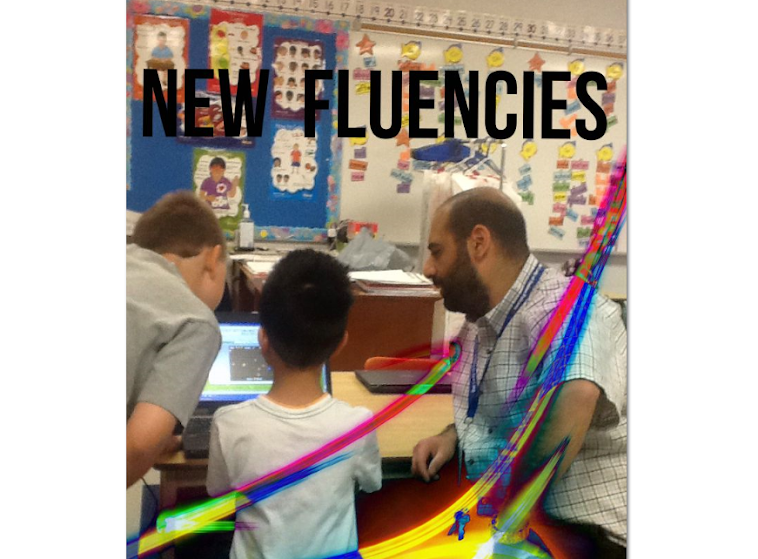 |
| Tom speaking to my students about Google Glass. |
My students got to see and try Google Glass earlier this week. Tom Emrich, a Glass Explorer in Toronto, visited our classroom and introduced my students and I to Glass. Google Glass is "a wearable computer with an optical head-mounted display (OHMD) that is being developed by Google in the Project Glass research and development project" (http://goo.gl/fRqQK). The experience was simply fantastic. The students were on the edge of their seats the entire presentation! Tom's talk was engaging and developmentally appropriate - so much so that my Principal, +Rodney Eckert, wondered whether Tom had any formal teacher training.
Tom explained what Glass is and the ins and outs of the device. He touched upon the benefits of Glass and how he thinks wearable technology is part of our lives at this time and the role it will play in the future.
After his talk and demonstrations he allowed each student to try on the Glass and test it out. Some students told Glass to take a photo and some told Glass to take video. Nevertheless, their reactions seemed to be the same each time - amazement at what they could do with simple voice commands and the ability to wear a computer.
 |
| Google Glass. |
One after the other, the look on their faces when they activated the device was priceless. It was amazing to see them engage with a technology that they had read about and watched on YouTube.
Prior to this experience, Google Glass was viewed as something beyond their reach, something that they would not get to see or interact with any time soon. Their interest and fascination with Glass and 'futuristic' technology is what motivated me to connect with Tom over Twitter. In fact, the tweet was made with my students in an effort to demonstrate how connected and accessible our society has become.
 |
| Tweet to and from Tom Emrich. |
Tom was more than happy to work out a plan to visit us and I can't thank him enough for the service and modelling he has provided my students. With his help and expertise my students have seen that anything is possible and that the only limits placed upon their dreams and imaginations are the ones they place on themselves.
My students have been stretching themselves and transforming the way they learn this year. The Blended Learning model, GAFE, and the Chromebooks have led them on a trajectory where creativity, collaboration, and critical thinking are welcome and have become the norm.
I too have been experiencing the same thing with my teaching and my professional learning. As Tom spoke to my students I thought about the uses Glass would have in my classroom. I thought about how students could use them and how I could use them. Although the possibilities are endless, let me share some of my thinking with you.
In the hands of students, I can visualize Glass capturing what they see, say, and how they interact with each other as they go about their daily learning. Imagine being able to view and hear what a student experiences as they work on tasks assigned to them. Not only would we be privy to such data but the student would benefit from it as well. Think of the reflection that they could experience by watching and hearing themselves as they process a problem or situation that had been captured via Glass.
 |
| Trying on Glass. |
From a teacher's perspective, Glass could also provide many benefits. With Glass I too could capture audio and video of student learning - assessment for learning. I could provide my assessments to parents instantly via email giving them information on what I see and suggestions for next steps at home for remediation or enrichment. The ability to connect with parents/colleagues using a 'hangout' (like Skype) would be a valuable tool to capture/show real time learning as I move around the room supporting students. I can also see how Glass would free up my hands as I multi task in the room. I can imagine taking audio notes and things of that nature as I go about the every day multi tasking in the classroom.
If I can come up with ways to leverage this technology in my classroom within a matter of minutes I am certain that more time and networking would produce creative and practical uses for Glass in schools.
Have you experienced Google Glass? Do you have any ideas about how Glass could be used in a classroom to benefit students and teachers? I would love to hear your thoughts. Please feel free to contact me me via
email,
Twitter,
Google +, or by leaving a comment for me here.





